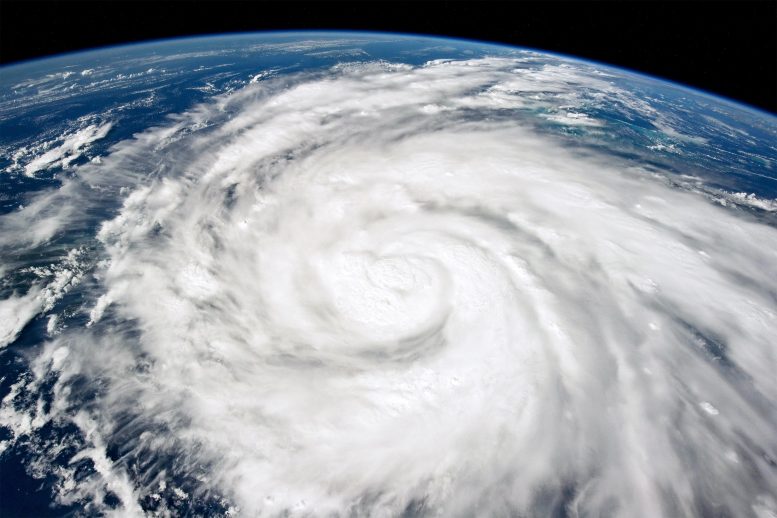
A crew member onboard the International Space Station took this photograph of Hurricane Ian on September 26 while orbiting more than 400 kilometers (250 miles) above Earth’s surface. At the time, the space station was located over the Caribbean Sea east of Belize, and Hurricane Ian was just south of Cuba. Over the course of the day, it grew from a tropical storm to a category-2 hurricane. Credit: NASA
According to researchers, ocean cooling is an effectively impossible solution to mitigate disasters.
According to recent research, even if we had infinite power to artificially chill the oceans enough to weaken a hurricane, the benefits would be minimal. The research, headed by experts at the University of Miami’s (UM) Rosenstiel School of Marine, Atmospheric, and Earth Science, found that using intervention technology to weaken a hurricane before impact is an extremely inefficient way to mitigate disasters.
“The main result from our study is that massive amounts of artificially cooled water would be needed for only a modest weakening in hurricane intensity before landfall,” said the study’s lead author James Hlywiak, a graduate of the UM Rosenstiel School.
“Plus, weakening the intensity by marginal amounts doesn’t necessarily mean that the likelihood for inland damages and safety risks would decrease as well. While any amount of weakening before landfall is a good thing, for these reasons it makes more sense to direct focus towards adaptation strategies such as reinforcing infrastructure, improving the efficiency of evacuation procedures, and advancing the science around detection and prediction of impending storms.”
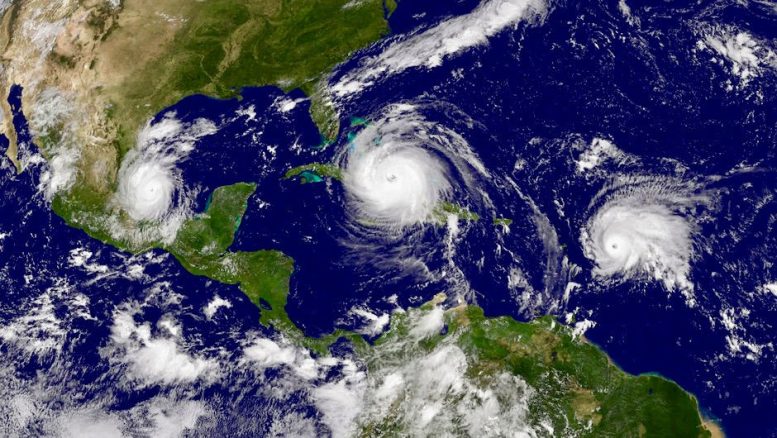
A satellite image from the National Oceanic and Atmospheric Administration captures an active hurricane season which included Hurricanes Katia and Irma and Tropical Storm Jose (from left to right) on September 8, 2017. Credit: NOAA
The scientists combined air-sea interaction theories with a highly sophisticated computer model of the atmosphere to provide valid scientific answers to questions concerning the efficacy of artificially chilling the ocean to weaken hurricanes.
They cooled regions of the ocean up to 260,000 km2 in size, which is bigger than the state of Oregon and equals 21,000 cubic kilometers of water, by up to 2 degrees Celsius in their computer simulations. Even with the largest cooling area, the simulated hurricanes only weakened by 15%. The amount of energy extracted from the ocean to accomplish this slight reduction is more than 100 times that used in the entire United States in 2019.
“You might think that the main finding of our article, that it’s pointless to try to weaken hurricanes, should be obvious,” said David Nolan, a professor of atmospheric sciences at the UM Rosenstiel School and senior author of the study. “And yet, various ideas for hurricane modification appear often in popular media and are even submitted for patents every few years. We’re happy to be able to put something into the peer-reviewed literature that actually addresses this.”
Reference: “Targeted artificial ocean cooling to weaken tropical cyclones would be futile” by James Hlywiak and David S. Nolan, 19 August 2022, Communications Earth & Environment.
DOI: 10.1038/s43247-022-00519-1
The study was funded by the National Science Foundation and the University of Miami.

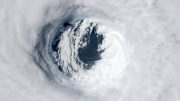

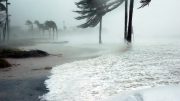
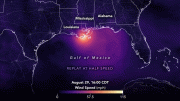

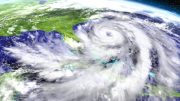
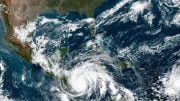
REPLY TO HLYWIAK AND NOLAN
Your article in Nature of 19 August https://www.nature.com/articles/s43247-022-00519-1 says that attempts to weaken tropical cyclones by ocean cooling would be futile.
I attach a note about the use of autonomous, wind-driven spray vessels to do this and would be grateful if you could check my calculations. The vessel design follows the proposal by Latham to exploit the Twomey effect to increase global reflectivity.
If you want to act when a hurricane is forecast you will be too late. You should have started last November. I would want vessels to cruise between Africa and the Gulf of Mexico, an area 50 times more than your figure. I want to do this over 200 days, 100 times longer than you suggest. We therefore disagree by a factor of 5000!
I want to adjust vessel position and spray rate using satellite temperature measurements to get the pattern of sea surface temperatures to approach those given by the Governments of surrounding countries. They will adjust payments to spraying contractors according to how close they can get.
I attach calculations on the vessel number required. The answer depends on a number of assumptions for solar input, cloud fraction, boundary layer depth, initial nuclei concentration and subsequent life of spray. These vary widely. The ones I have used have been circulated for comment to the climate community and I can easily change them to ones you suggest. If you accept them, the number of vessels for moderating Atlantic hurricanes by a 2K reduction in sea surface temperature is about 300. Although the cooling energy is one thousand times annual US electrical generation the idea works because the solar energy reflected by a cloud drop is about a billion times more than the surface tension energy needed to make a condensation nucleus on which the cloud drop started.
Vessel design is nearly complete. The displacement is 90 tonnes and the power requirement 300 kW. Flower class Corvettes were built in similar numbers but with higher power and displacement. If we index link Corvette cost and use the present cost per tonne of heavy earth moving machinery we can hope that vessel cost in full production will be about $5million each.
I would be grateful if you could check my figures and suggest desirable temperature patterns. Is a cooling of 2K enough?
Would you like to see calculations about sea level rise and Arctic ice and a way to increase sea evaporation?
Best wishes
Stephen Salter